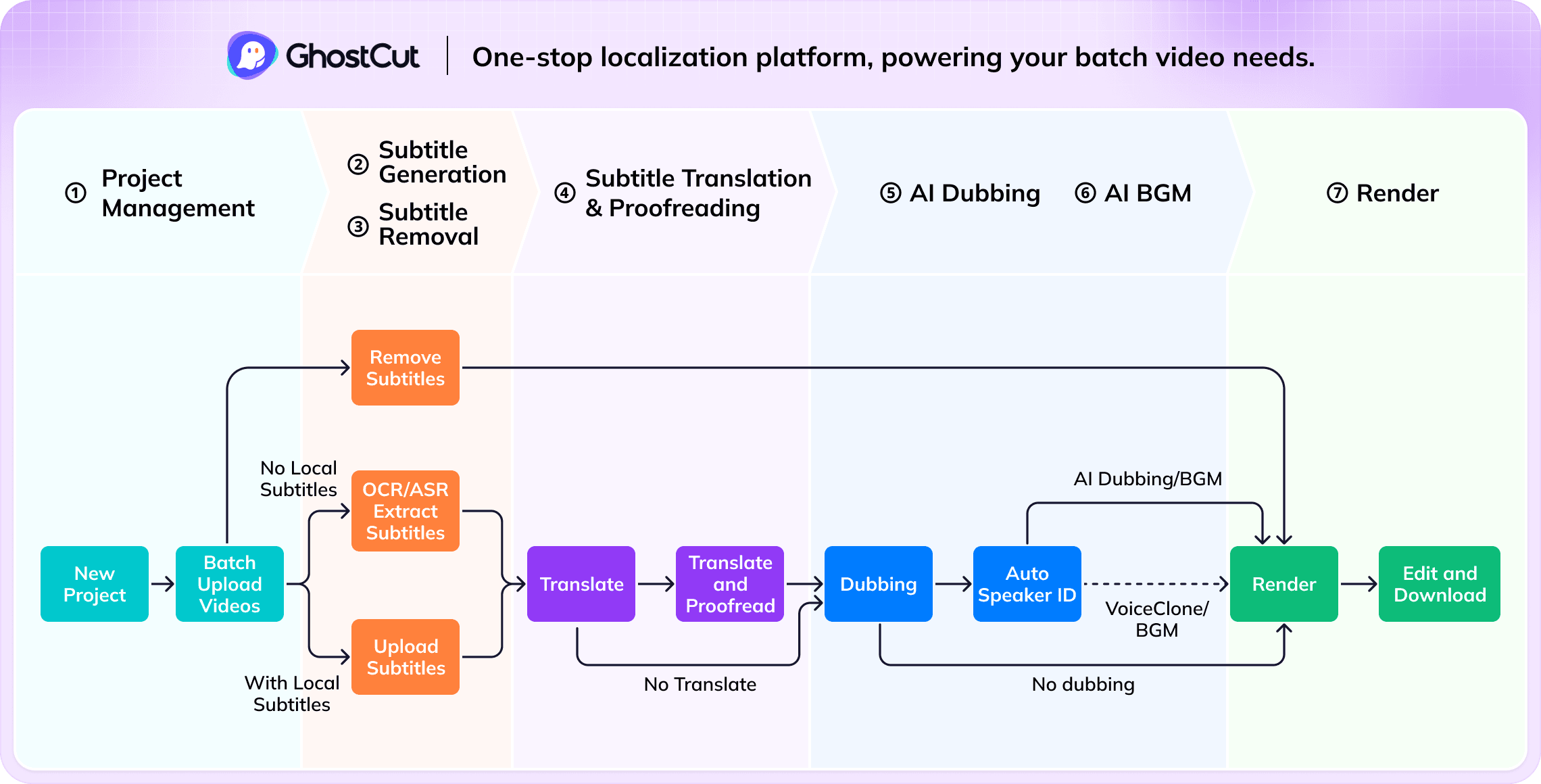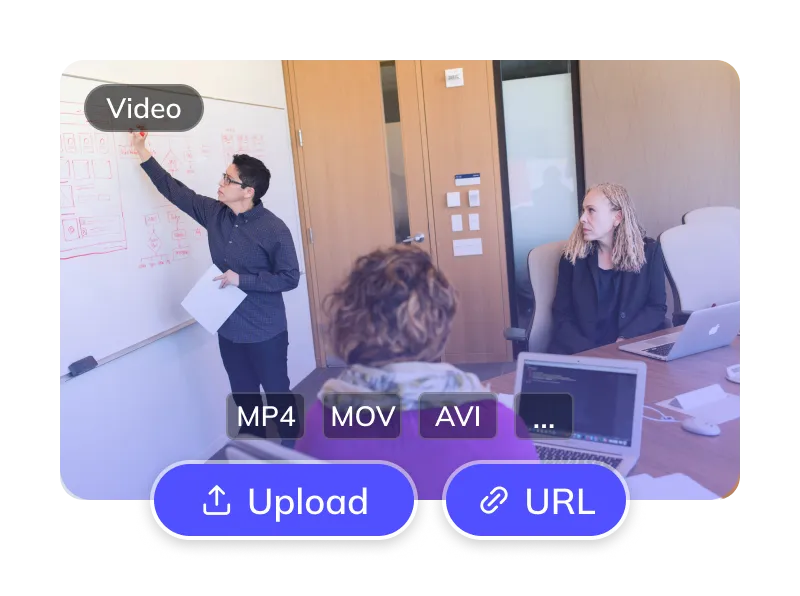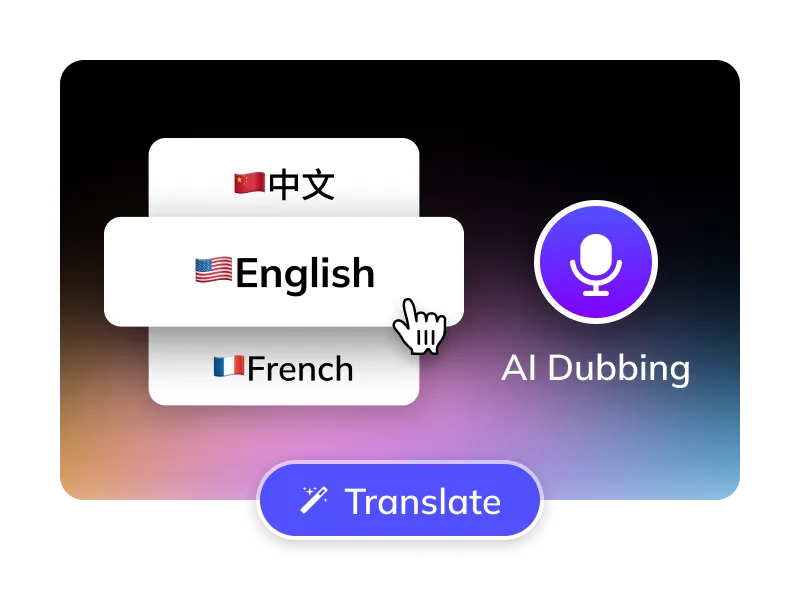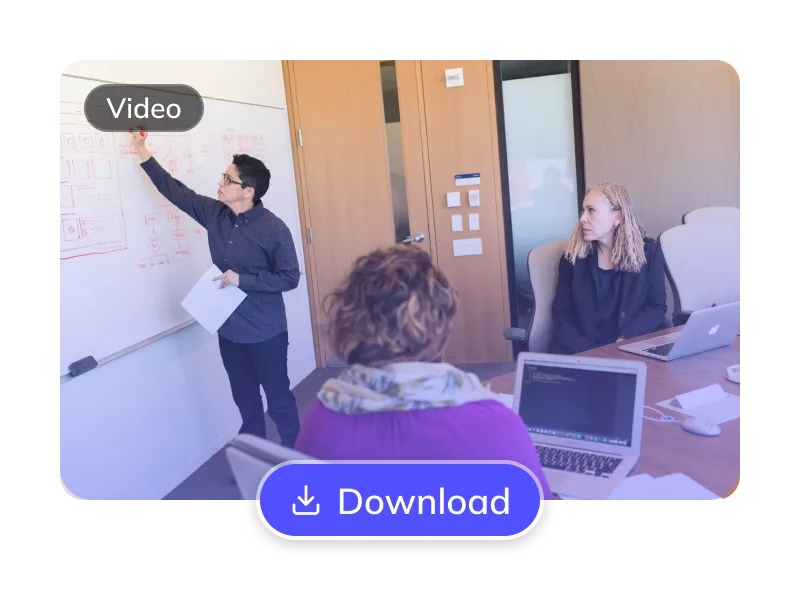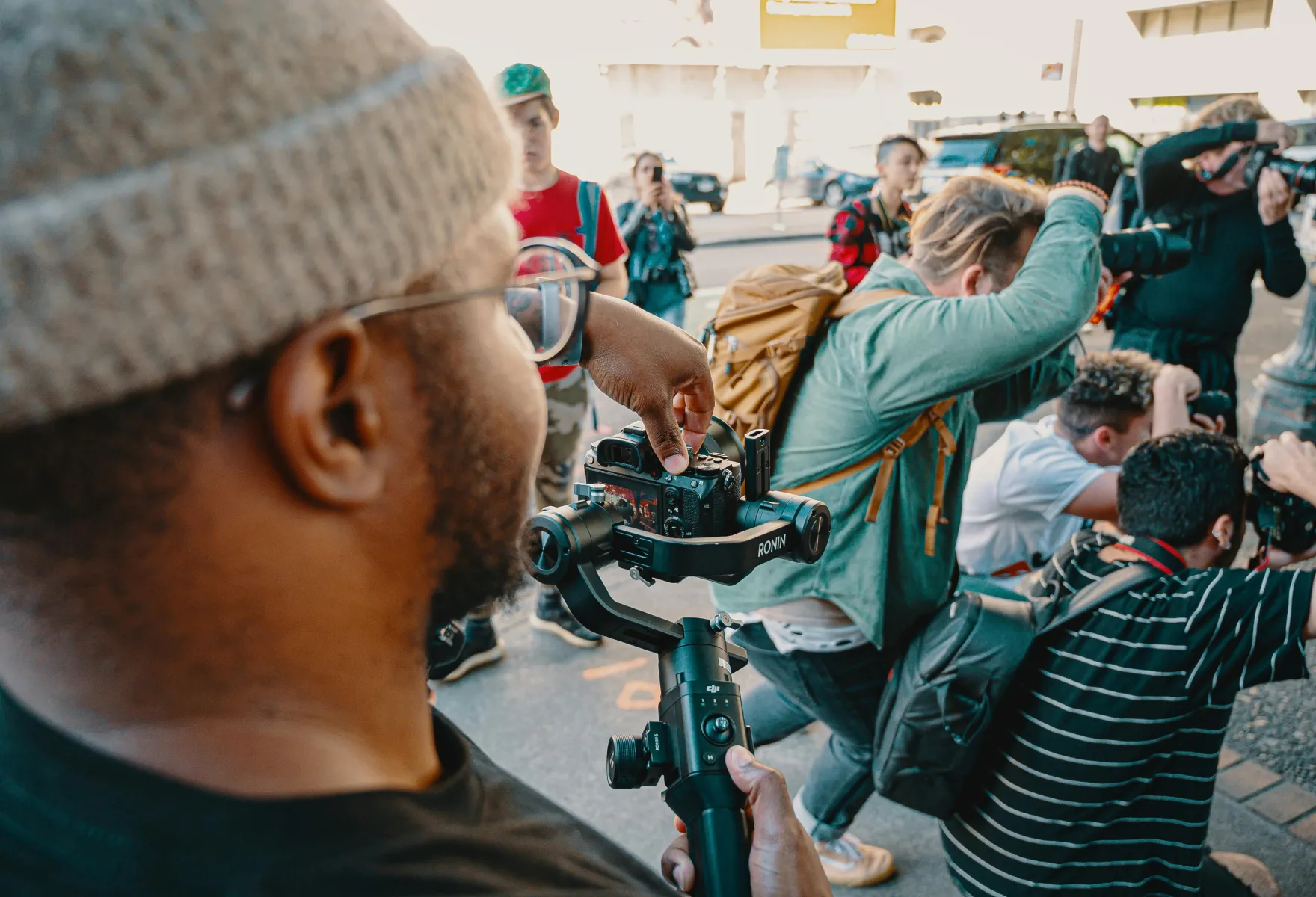How to Translate Documentary Videos to English ?
Translate Documentary Videos to Japanese in 3 Easy Steps
Trusted by 1,500,000+ Global Creators and Businesses
Why GhostCut for Your Video Translations?
GhostCut is your all-in-one AI solution for translating Documentary content into natural, engaging Japanese.
Effortless Project Management
Manage Documentary assets, subtitles, & Japanese videos. Batch process projects efficiently.
Pinpoint Japanese Accuracy
Up to 99.5% accurate. Optimized for Documentary-to-Japanese with LLM calibration & multi-agent review for culturally fluent Japanese translations.
Lifelike Japanese AI Dubbing
Choose from diverse, human-like Japanese AI voices (US/UK accents). Emotion-cloning technology captures original tone for natural Japanese delivery.
Flexible Documentary Subtitle Options
Optionally erase original Documentary hardsubs for a clean slate. Translate embedded Documentary subtitles directly.
Smart Multi-Speaker ID (Documentary)
AI detects multiple speakers in Documentary videos. Assign or clone distinct Japanese voices per character, with cross-episode consistency for complex Japanese dubs (dramas, interviews).
Efficient Batch Processing & API
Batch translate and dub 100s of Documentary videos to Japanese at once. Seamlessly integrate with our robust API.
Versatile BGM Control
Keep or mute original BGM. Our unique tech can also isolate sound effects, meeting diverse copyright and distribution needs.
Unbeatable Value
Flexible Documentary-to-Japanese plans. Try core features free. Automated pro service from just $0.1/minute.
Easy Online Access
No downloads. Instantly translate Documentary videos to Japanese online. Works on Windows, Mac, & major mobile browsers for cloud processing anywhere.
The GhostCut Edge: Unmatched Accuracy, Speed, and Value.
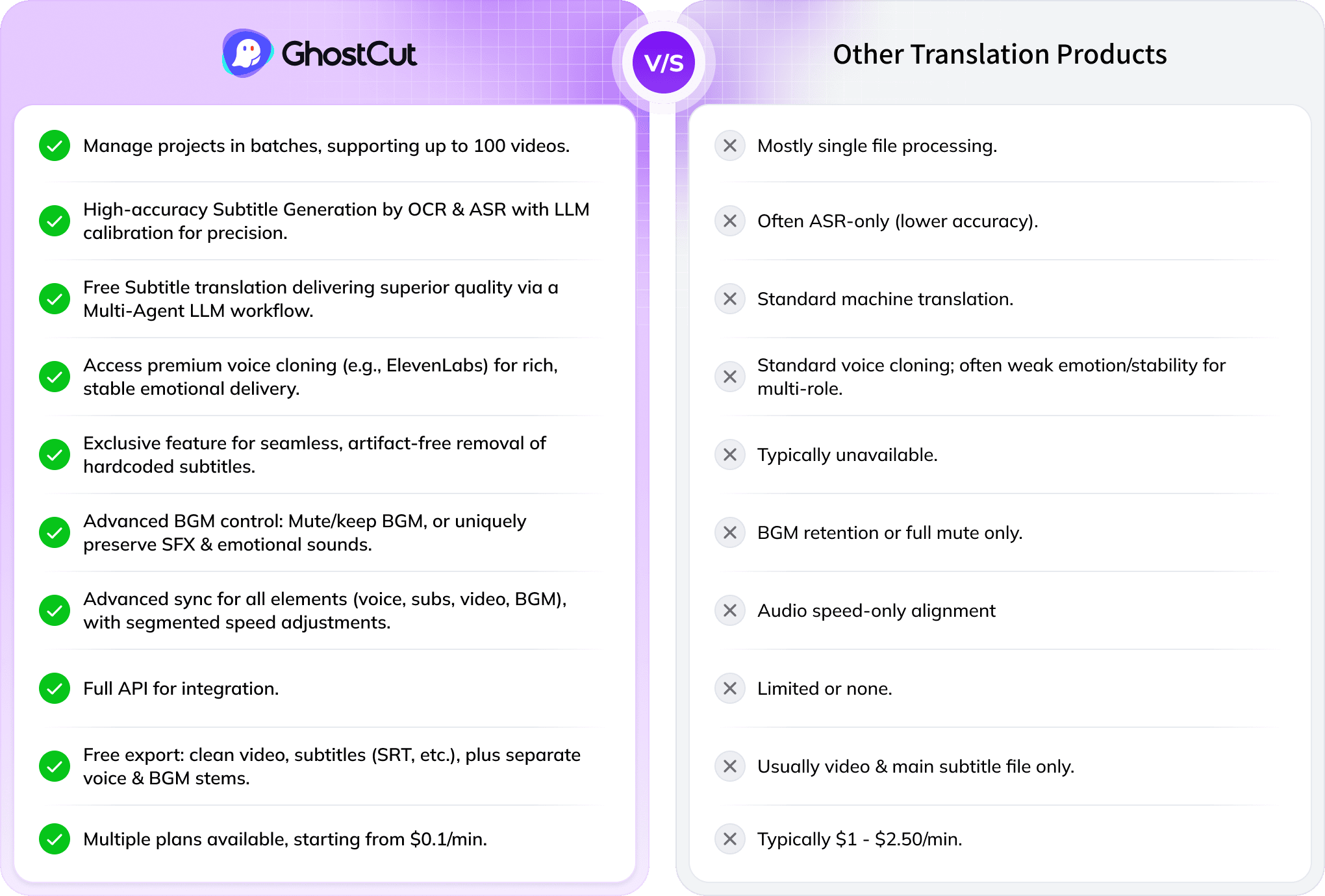
Every Algorithmic Optimization, Engineered for Quality Japanese Video
Mastering Long-Form Documentary Drama & Multi-Character Dubbing
Translating a 100-minute Documentary drama with 4000+ lines and many characters into Japanese is tough. Standard AI struggles to tell speakers apart, causing errors. GhostCut’s multi-modal AI (video, voice, text) excels in long-form, multi-speaker content, ensuring accurate, consistent character voices across entire series.
Translate Now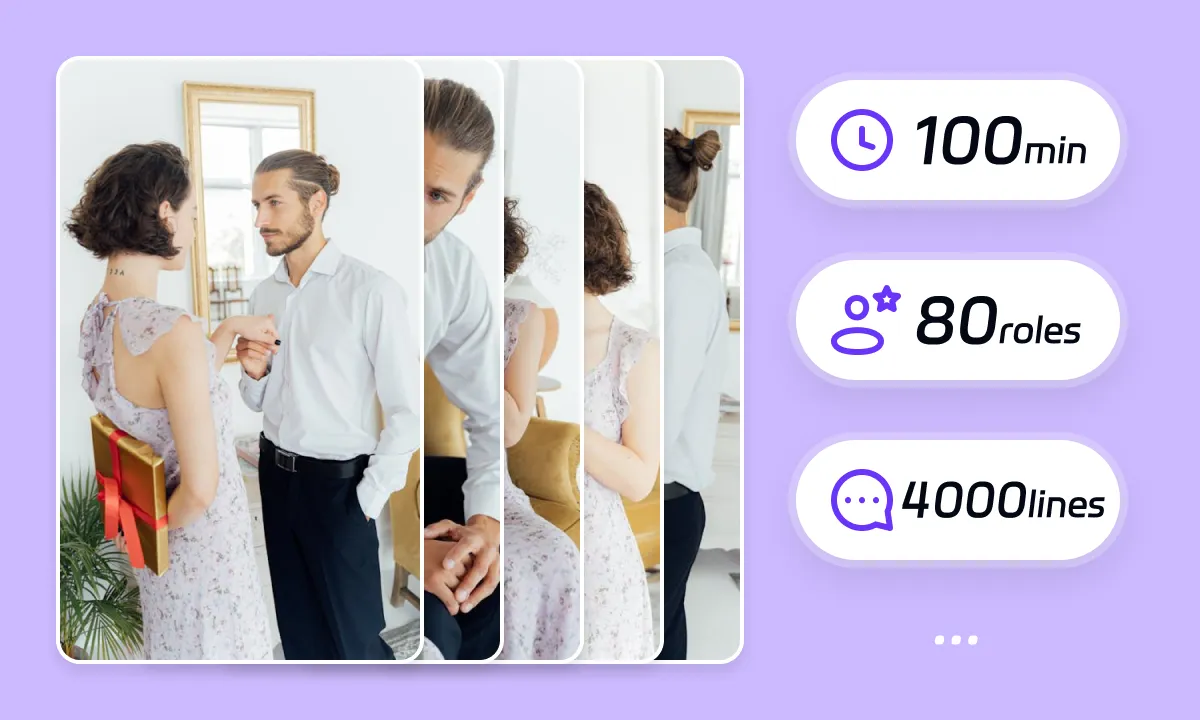
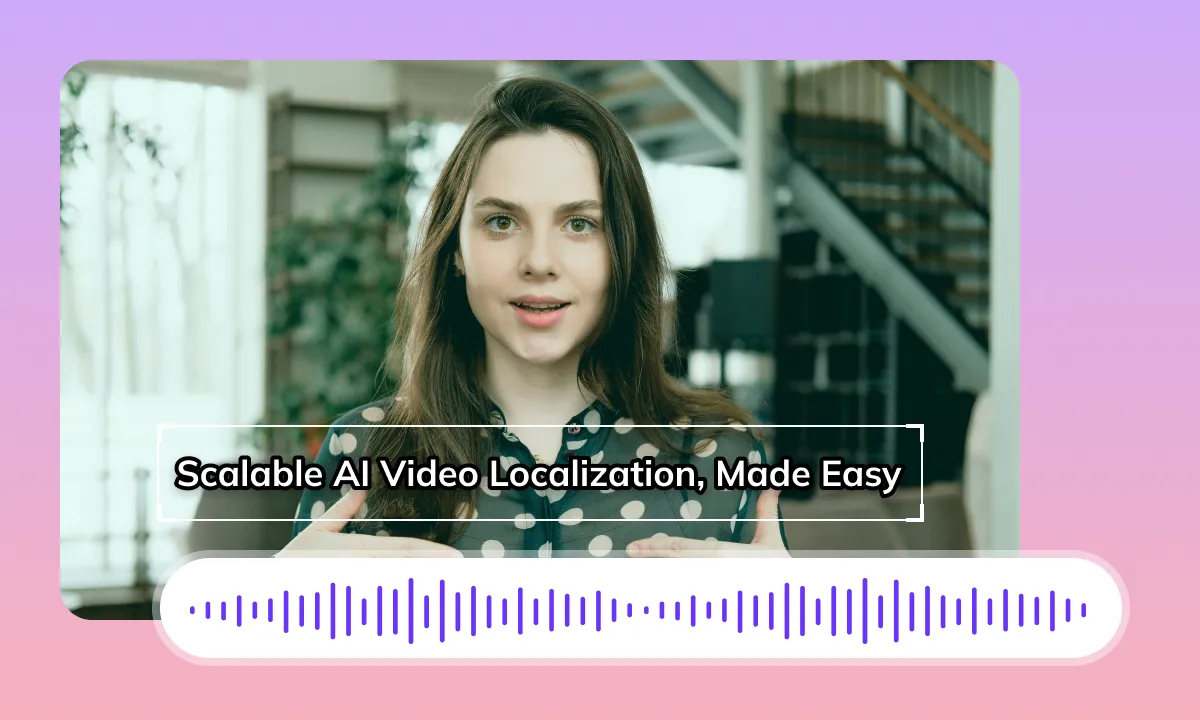
Seamless Japanese Dubbing & Perfect Lip-Sync
GhostCut ensures natural Japanese audio flow by treating related subtitles as whole ideas for TTS. It then precisely times new Japanese subtitles. Since Documentary-to-Japanese translation can change speech length, our AI expertly adjusts the new Japanese audio, subtitles, video, and BGM to maintain perfect sync, just like a seasoned editor.
Translate NowBoost ROI with Flawless Documentary Subtitle Removal
Original Documentary hardsubs can limit your video's global appeal. GhostCut’s AI doesn't just blur; it intelligently reconstructs the background obscured by Documentary subtitles, even complex ones, for a perfectly clean, high-quality visual. This means better viewer engagement, longer watch times, and higher ROI.
Translate Now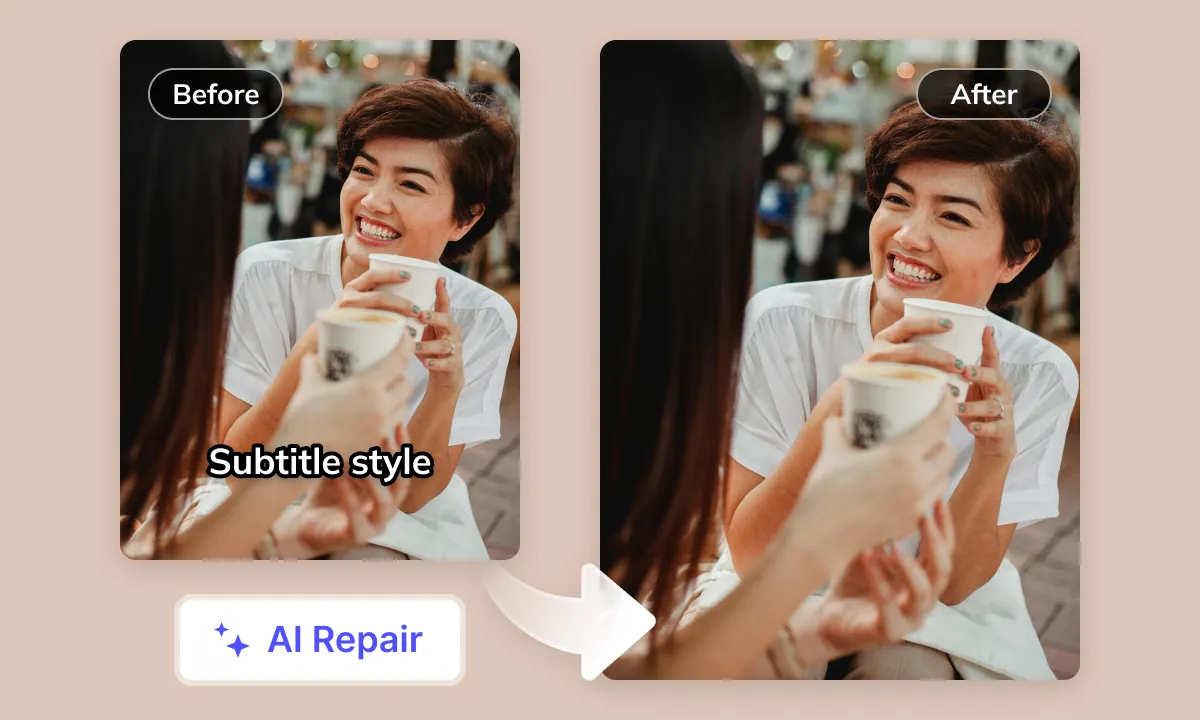
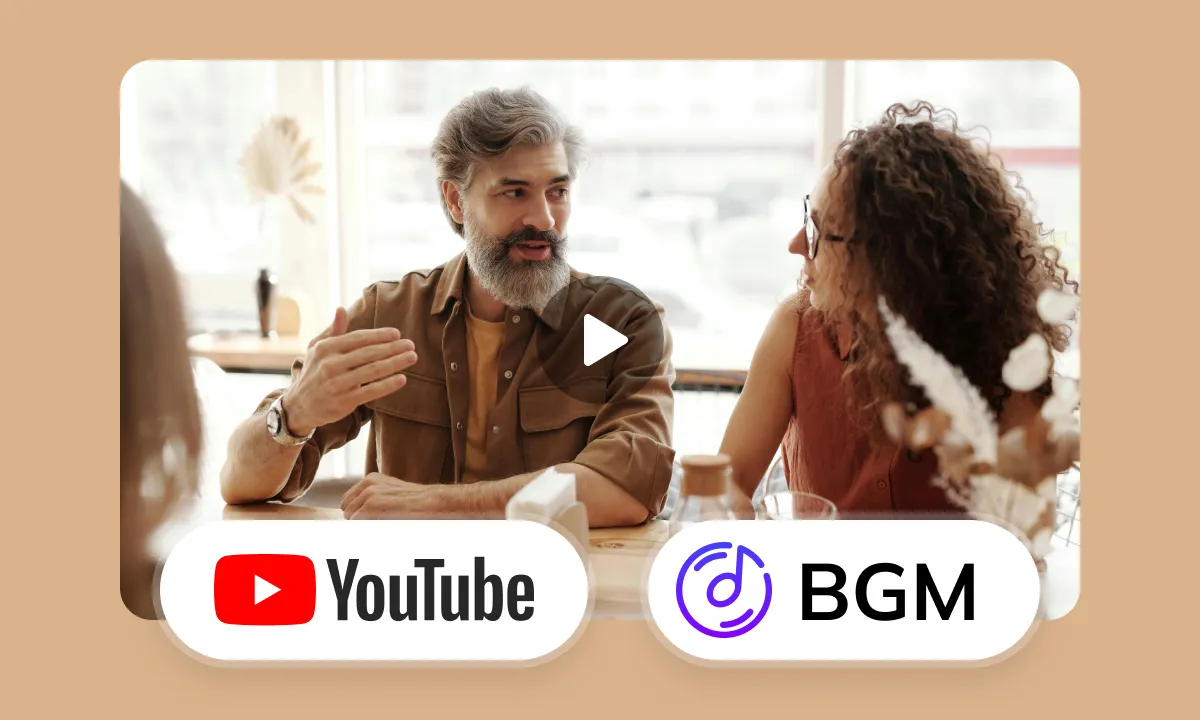
Smart Audio Control for YouTube Creators
Navigating BGM copyright on YouTube is tricky. GhostCut’s advanced audio separation isolates Documentary dialogue for translation, while intelligently managing BGM, sound effects, and even emotional expressions. Our "Keep SFX, Remove Music" option is a creator favorite for avoiding copyright issues without losing your video’s impact.
Translate NowYour Documentary Deserves Deep Understanding in Japan
Language barriers limit your documentary's reach in Japan, regardless of its original language or topic (nature, history, social issues, tech). On Japanese platforms, poor translation and dubbing make non-Japanese documentaries hard to understand, severely affecting viewer experience, knowledge, and global influence. Thus, the market urgently needs professional, efficient AI localization solutions for documentaries in Japanese
Challenges in Japanese Documentary Localization
Managing Original Audio-Visual Elements
Documentaries often come with inherent narration, synchronized sound, or on-screen text. When localizing them into Japanese, effectively handling (e.g., removing or replacing) this original information is crucial to avoid impacting Japanese viewers' comprehension and immersion with the new content
Cross-Cultural Specialized Content Translation
Documentaries cover a wide range of subjects, involving specialized knowledge and diverse cultural backgrounds. Accurately and naturally transforming this content into Japanese, especially when dealing with unique concepts, historical events, or social phenomena, while preserving the original style and informational depth, is a core challenge. Significant differences in Japanese honorifics and expression habits compared to source languages require meticulous handling
Japanese Subtitle Display Characteristics
Japanese script uses various character types, and its information density differs from other languages. Documentary subtitles require prolonged reading. Designing layout, line breaks, and font sizes for high information density to ensure clarity and readability across various screen sizes, while aligning with Japanese viewers' reading habits, presents a complex challenge combining technology and design
Coordinating Pace, Rhythm, and Timing
Documentaries have specific narrative rhythms and narration speeds. When translated into Japanese, content length and pronunciation time change due to language structure and phonetic differences. Maintaining synchronization in Japanese voiceovers or subtitles with the original visuals' rhythm, character actions, or event progression requires precise timeline control
Source Audio Recognition Challenges
If relying on AI technology, the diverse sound environments in documentaries (interviews, ambient sounds, background music), varying accents, specialized terminology, and potential quality issues with historical recordings can all affect the accuracy of source language speech recognition, thereby impacting the initial quality of the Japanese translation
Selecting Suitable Japanese Voiceover Talent
Documentaries demand high standards for voiceover timbre, emotion, and professionalism. Finding or synthesizing a Japanese AI voice that is natural, fluent, expressive, and matches the documentary's thematic style (e.g., serious, educational, factual), or selecting appropriate voice actors, is a critical challenge
Lip-Sync Challenges for Character Dialogue
While narration is key, Japanese voiceovers for character interviews in documentaries require achieving 'perceived synchronization' between the sound and the on-screen character's mouth movements. The significant differences in mouth shapes when pronouncing different languages pose high demands on voiceover or post-production techniques, especially during close-ups of faces
High Standards for Japanese Doc Localization
An ideal process should encompass: accurate source language audio recognition (including complex environments) - faithful, natural, and authentic Japanese translation (considering culture, professionalism, and context) - high-quality Japanese voiceovernarration (matching voice style, conveying emotion) - clear subtitle formatting compliant with Japanese reading habits - and ultimately, high synchronization of audio-visuals and narrative rhythm
Tackling Video Translation Challenges with AI Empowering your Documentary content for any worldwide scenario.
Your All-in-One AI Translation Studio
GhostCut offers more than just Documentary-to-Japanese translation. It's a complete AI-powered workflow: subtitle extraction 、 removal 、 translation and proofreading to multi-character dubbing , BGM processing, and final rendering. Go from Documentary source to global-ready videos, effortlessly.
